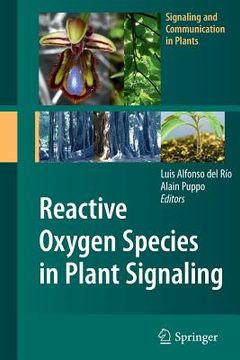Share
reactive oxygen species in plant signaling
Luis A. del Río
(Illustrated by)
·
Alain Puppo
(Illustrated by)
·
Springer
· Paperback
reactive oxygen species in plant signaling - del Río, Luis A. ; Puppo, Alain
Choose the list to add your product or create one New List
✓ Product added successfully to the Wishlist.
Go to My Wishlists
Origin: U.S.A.
(Import costs included in the price)
It will be shipped from our warehouse between
Friday, July 05 and
Wednesday, July 17.
You will receive it anywhere in United Kingdom between 1 and 3 business days after shipment.
Synopsis "reactive oxygen species in plant signaling"
Oxygen (O ) appeared in significant amounts in the Earth's atmosphere over 2. 2 2 billion years ago, largely due to the evolution of photosynthesis by cyanobacteria (Halliwell 2006). The O molecule is a free radical, as it has two impaired electrons 2 that have the same spin quantum number. This spin restriction makes O prefer to 2 accept its electrons one at a time, leading to the generation of the so-called reactive oxygen species (ROS). The chemical nature of these species dictates that they can create damage in cells. This has contributed to the creation of the "oxidative stress" concept; in this view, ROS are unavoidable toxic products of O metabolism and 2 aerobic organisms have evolved antioxidant defences to protect against this tox- ity (Halliwell 1981; Fridovich 1998). Indeed, even in present-day plants, which are full of antioxidants, much of the protein synthetic activity of chloroplasts is used to replace oxidatively damaged D1 and other proteins (Halliwell 2006). Yet, the use of the "oxidative stress" term implies that ROS exert their effects through indiscriminate widespread inactivation of cellular functions. In this context, ROS must not be able to react with lipids, proteins or nucleic acids in order to avoid any damage to vital cellular components. However, genetic evidence has suggested that, in planta, purely physicoche- cal damage may be more limited than previously thought (Foyer and Noctor 2005).
- 0% (0)
- 0% (0)
- 0% (0)
- 0% (0)
- 0% (0)
All books in our catalog are Original.
The book is written in English.
The binding of this edition is Paperback.
✓ Producto agregado correctamente al carro, Ir a Pagar.

